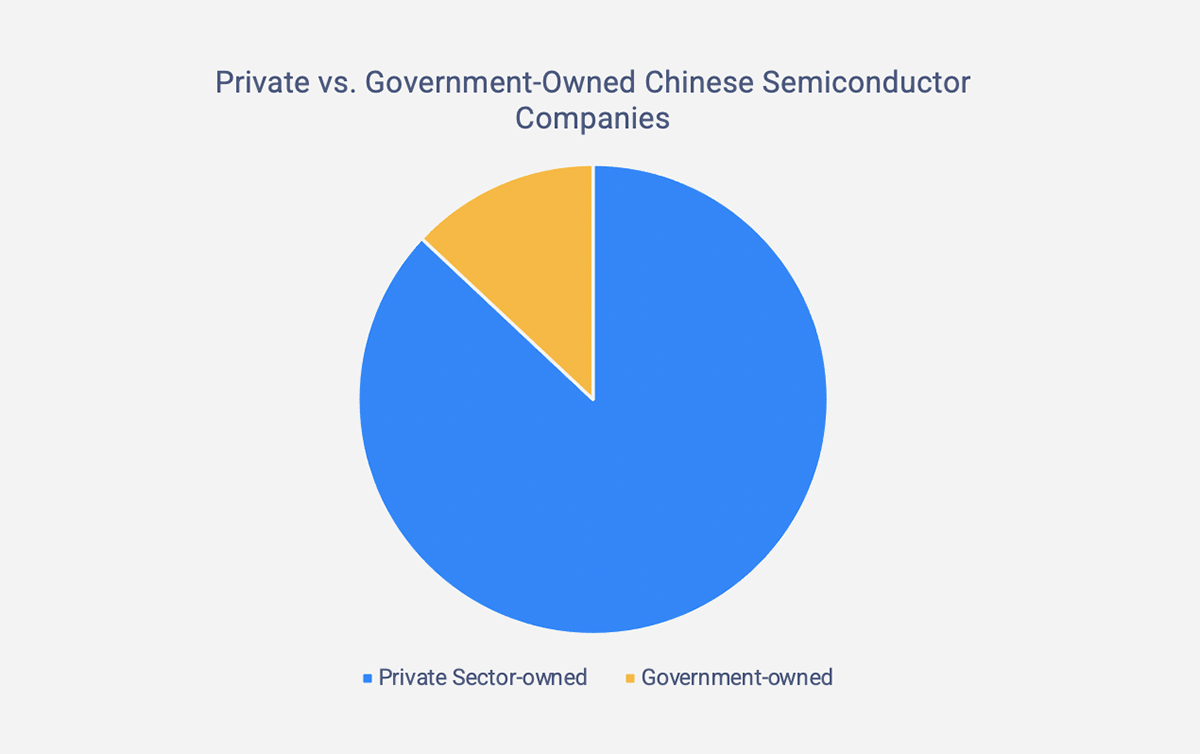In the wake of new export controls issued by the Biden administration in early October, suppliers of chip-making equipment are stalling any servicing of Chinese chip factories. The new restrictions from the US Department of Commerce’s Bureau of Industry and Security are said to be among the toughest the United States has ever enacted.
In recent years, Beijing has made China’s semiconductor development and manufacturing capabilities a priority, in part due to U.S. export controls limiting China’s access to U.S. technologies. The number of companies that have registered as semiconductor firms in China has increased by 700 percent since 2010, according to an analysis by the Financial Times.
This new rule issued by BIS imposes complex new controls that impact advanced computing integrated circuits (ICs), computer commodities, semiconductor items and related manufacturing equipment, and supercomputers. It also imposes heightened knowledge standards and due diligence requirements for U.S. businesses who want to export to China.
Now more than ever, it’s important for Western suppliers to conduct investigations into their Chinese partners to ensure compliance with the new restrictions. Using public records and graph analytics, we compiled a dataset of semiconductor firms and the 35,000+ companies in their ownership networks to help suppliers better understand the semiconductor landscape they may be wading into.
The Chinese government prioritizes semiconductors
Semiconductors power most modern technology, from cars and smartphones to telecommunications equipment. Their design and manufacturing process is complex and dominated by a small number of firms in the United States, Taiwan, and Europe.
The Chinese government has spent decades investing in a domestic semiconductor industry. But under Xi Jinping, the Chinese Communist Party has made renewed efforts to create an independent semiconductor supply chain under the “Made in China 2025” plan. The plan aims for China, the world’s largest consumer of semiconductors, to produce 70 percent of its own semiconductor needs by 2025.
The Chinese government directly or indirectly holds shares in 13 percent of Chinese semiconductor firms, reflecting Beijing’s push toward self-reliance in the chipmaking industry. These investments primarily come from China’s State Council, but local governments across the country also own shares in semiconductor firms, indicating a nationwide drive to invest in a key industry.
In recent years, the U.S. government has continuously issued export restrictions prohibiting U.S. firms from exporting semiconductor parts to certain Chinese firms without a license. These actions have increased the pressure on China to develop a self-sufficient semiconductor supply chain in order to maintain its level of semiconductor consumption.
Using graph analytics to map China’s semiconductor industry
In August of last year, we conducted an investigation into Chinese semiconductor companies that still serves as a great example of how Western companies can adapt to these new export controls. Investigators can use the below example as a framework for conducting deep explorations into Chinese semiconductor ownership structures to uncover government involvement.
To create a sample of Chinese semiconductor companies, we first identified every company in our database of Chinese public records with the word for “semiconductor” (半导体) in their registered business purpose. This resulted in a list of 8,129 companies. (Note that this list only includes companies with records in the National Enterprise Credit Information Publicity System (NECIPS), China’s most up-to-date and comprehensive corporate registry.)
We then followed each of these companies’ ownership links upstream up to three layers of ownership from the original entity. This resulted in approximately 35,000 unique entities that are direct or indirect shareholders of semiconductor companies. We used this list to identify the state-run agencies and investment vehicles that fund semiconductor companies.
Semiconductor firms concentrated in few regions
China’s semiconductor industry is concentrated in the country’s eastern and southern coasts, hubs of technology and capital. More than half of the country’s semiconductor firms are located in Jiangsu Province, Guangdong Province, and Shanghai, according to the registered addresses of the companies in our sample.
Jiangsu province, where over 2,700 firms are based, is home to Jiangsu Changdian (JCET) and many of its subsidiaries. JCET is one of China’s leading semiconductor designers and manufacturers.
State ownership concentrated in central government and major cities
About thirteen percent of the semiconductor companies in our sample are partially or wholly owned by Chinese government entities within three layers of ownership. Indeed, Chinese government entities may have indirect stakes in more semiconductor companies beyond three degrees of ownership.

Among government-owned semiconductor firms, most are owned by the country’s central government via the State Council State-owned Assets Supervision and Administration Commission (SASAC). However, provincial, prefectural, and city-level governments — and their SASACs — have also invested in hundreds of semiconductor firms.
The Shanghai and Beijing municipal governments have invested in the most semiconductor firms in our dataset, likely due to the high concentration of talent in those cities.
Tracking Chinese government investment across strategic industries
The Chinese government invests in industries that it has deemed strategically important. Direct ownership of firms is one of many ways that the government puts money toward key industries.
Public records and graph analytics indicate that the Chinese government, at both the national and local levels, owns a substantial percentage of China’s semiconductor industry.
China’s publicly available corporate registries offer comprehensive information on corporate ownership and business purpose. Running bulk ownership queries against companies with specific business purposes can be used to assess the level of state ownership in virtually any industry.
Want to learn more about conducting investigations in China? Watch our latest Master Class to learn how to uncover Chinese military companies with public data.



